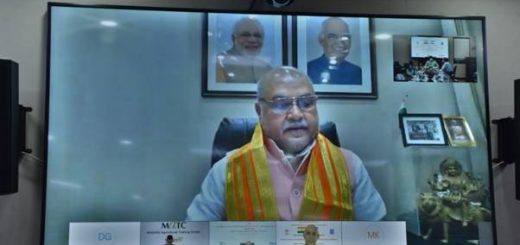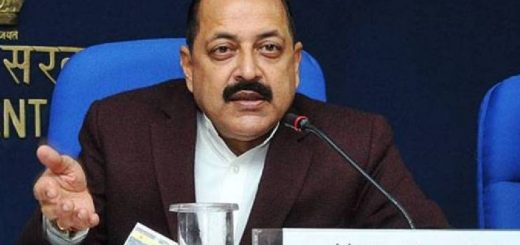Nirmala Sitharaman retains finance ministry with several tasks cut out

Khevna.P.Shah, INN/Bangalore
@Shahkhevna1, @Infodeaofficial
Nirmala Sitharaman a two-time Rajya Sabha MP created history when she became the first full-time woman finance minister of India to impel the country out of an economic slowdown and address pressing issues such as job creation, mounting bad loans, and slowing investment.
After Wednesday’s Cabinet reshuffle Sitharaman retained her position as the finance mister and along with that, she gets two Ministers of State for Finance Pankaj Choudhary and Bhagwat Kishanrao Karad to assist her in achieving various goals laid down by the government in the Budget 2021-22.

Sitharaman is a post-graduate in economics from Delhi’s Jawaharlal Nehru University(JNU) and an MPhil had the task to prop up the economy facing downward pressure since 2017-18.
The GDP growth rate has been falling since 2017-18 and the sudden fall of price from the last fiscal on account of the pandemic and subsequent lockdown, since the pandemic the biggest challenge faced by the finance minister is lifting growth and the business sentiments.
The crucial tasks before the minister of finance are to contain the fiscal deficit, provide a push to disinvestment, and stop the global credit rating agencies from taking any adverse action
In the Modi 1.0 government, Nirmala Sitharaman became the first full-time woman defence minister in 2017 and prior to this, Indira Gandhi, as Prime Minister, held additional charge of the finance ministry in 1970-71.
The GDP growth rate, which was 8.3 per cent during the year of demonetisation when 86 per cent of India’s currency was scrapped and fell to 7.2 per cent in the following year 2017-18. It further dropped to 6.1 per cent in 2018-19 and subsequently to 4 per cent.
The economy contracted sharply by 7.3 percent from April 2020 to March 2021 (FY21), weighed down by the nationwide lockdown that crashed down consumption and halted most of the economic activities. Since 1979-80 when the GDP of the country had shrunk by 5.2 percent this was the first full-year contraction in the Indian economy in the last four decades.
Linked to this is the lifting of wilting investment and job creation which has a setback due to the moderation in growth for the last four years.
As regards fiscal deficit, which measures the government’s borrowing, has reached a record level of 9.3 percent of the GDP during 2020-21.
During the current year, meeting the Budget Estimate of 6.8 per cent seems to be a formidable task when given the moderation of tax revenues.




